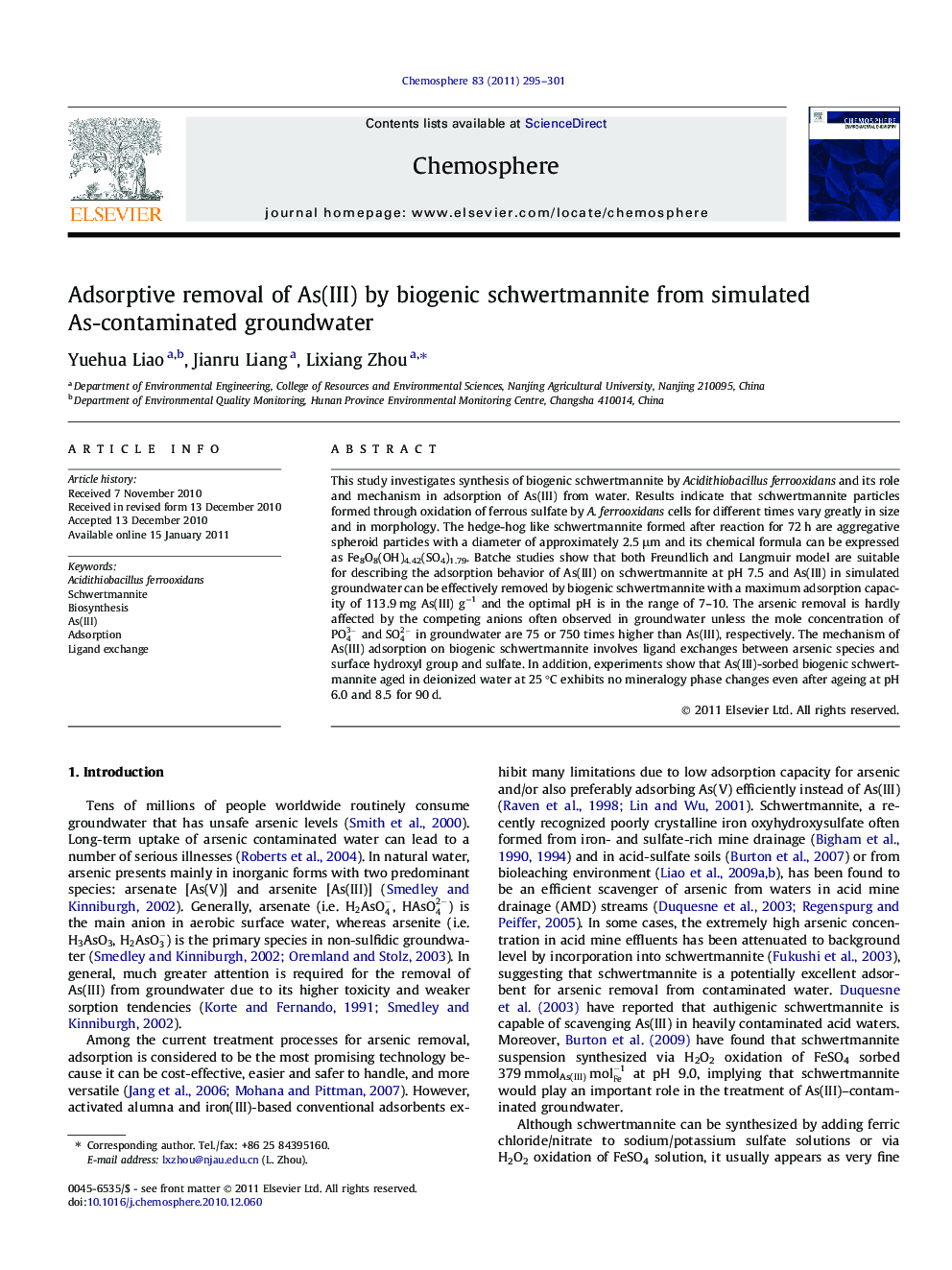| کد مقاله | کد نشریه | سال انتشار | مقاله انگلیسی | نسخه تمام متن |
|---|---|---|---|---|
| 4410867 | 1307567 | 2011 | 7 صفحه PDF | دانلود رایگان |

This study investigates synthesis of biogenic schwertmannite by Acidithiobacillus ferrooxidans and its role and mechanism in adsorption of As(III) from water. Results indicate that schwertmannite particles formed through oxidation of ferrous sulfate by A. ferrooxidans cells for different times vary greatly in size and in morphology. The hedge-hog like schwertmannite formed after reaction for 72 h are aggregative spheroid particles with a diameter of approximately 2.5 μm and its chemical formula can be expressed as Fe8O8(OH)4.42(SO4)1.79. Batche studies show that both Freundlich and Langmuir model are suitable for describing the adsorption behavior of As(III) on schwertmannite at pH 7.5 and As(III) in simulated groundwater can be effectively removed by biogenic schwertmannite with a maximum adsorption capacity of 113.9 mg As(III) g−1 and the optimal pH is in the range of 7–10. The arsenic removal is hardly affected by the competing anions often observed in groundwater unless the mole concentration of PO43- and SO42- in groundwater are 75 or 750 times higher than As(III), respectively. The mechanism of As(III) adsorption on biogenic schwertmannite involves ligand exchanges between arsenic species and surface hydroxyl group and sulfate. In addition, experiments show that As(III)-sorbed biogenic schwertmannite aged in deionized water at 25 °C exhibits no mineralogy phase changes even after ageing at pH 6.0 and 8.5 for 90 d.
Research highlights
► Pure biogenic schwertmannite was prepared easily and in quantity by Acidithiobacillus ferrooxidans cells.
► As(III) can be removed by schwertmannite with a maximum adsorption capacity of 113.9 mg g−1.
► Mechanism for As(III) adsorption by schwertmannite involves ligand exchanges.
► As(III)-sorbed schwertmannite was found to be stable even under weakly alkaline conditions.
Journal: Chemosphere - Volume 83, Issue 3, April 2011, Pages 295–301